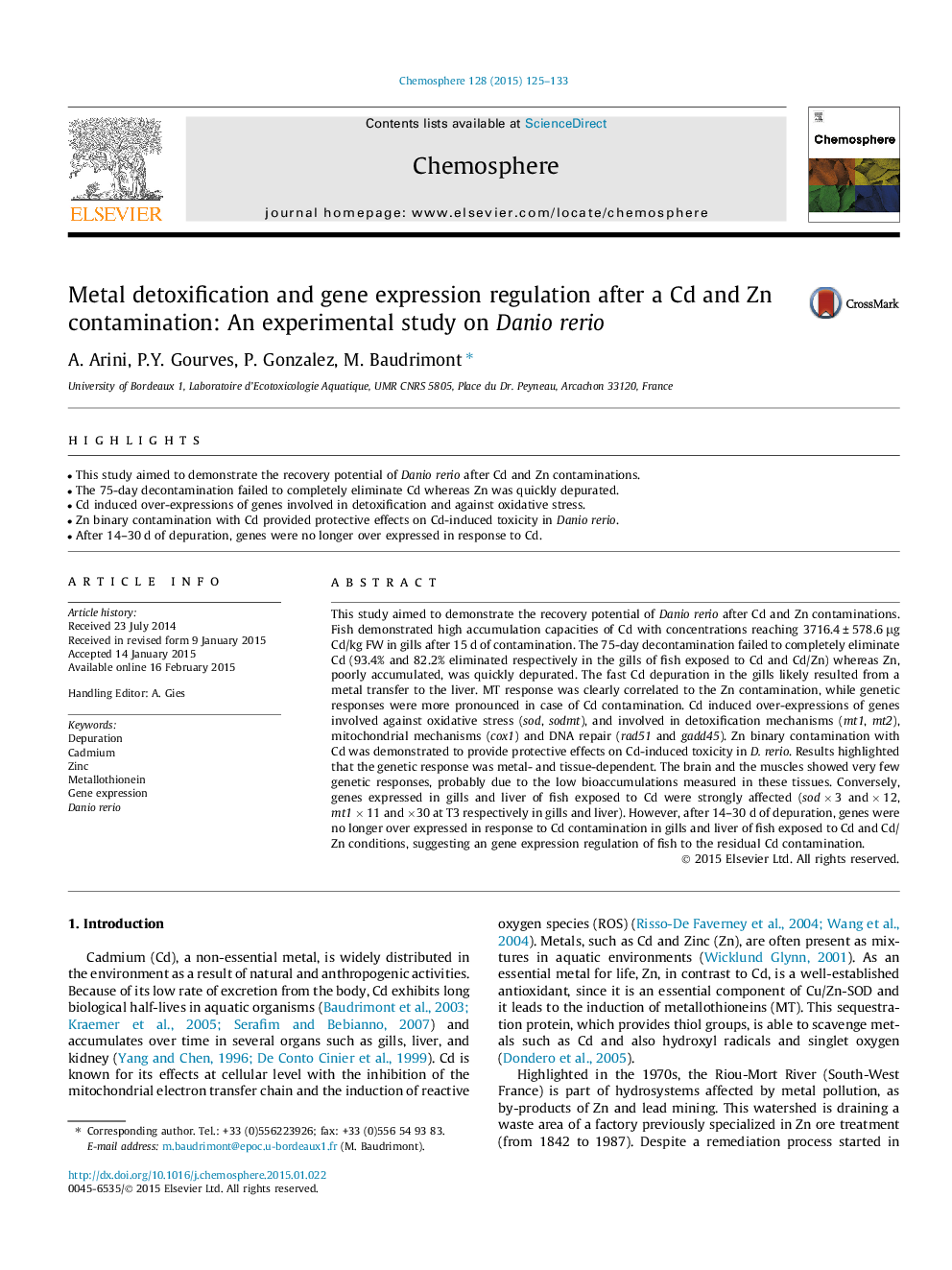| Article ID | Journal | Published Year | Pages | File Type |
|---|---|---|---|---|
| 4408480 | Chemosphere | 2015 | 9 Pages |
•This study aimed to demonstrate the recovery potential of Danio rerio after Cd and Zn contaminations.•The 75-day decontamination failed to completely eliminate Cd whereas Zn was quickly depurated.•Cd induced over-expressions of genes involved in detoxification and against oxidative stress.•Zn binary contamination with Cd provided protective effects on Cd-induced toxicity in Danio rerio.•After 14–30 d of depuration, genes were no longer over expressed in response to Cd.
This study aimed to demonstrate the recovery potential of Danio rerio after Cd and Zn contaminations. Fish demonstrated high accumulation capacities of Cd with concentrations reaching 3716.4 ± 578.6 μg Cd/kg FW in gills after 15 d of contamination. The 75-day decontamination failed to completely eliminate Cd (93.4% and 82.2% eliminated respectively in the gills of fish exposed to Cd and Cd/Zn) whereas Zn, poorly accumulated, was quickly depurated. The fast Cd depuration in the gills likely resulted from a metal transfer to the liver. MT response was clearly correlated to the Zn contamination, while genetic responses were more pronounced in case of Cd contamination. Cd induced over-expressions of genes involved against oxidative stress (sod, sodmt), and involved in detoxification mechanisms (mt1, mt2), mitochondrial mechanisms (cox1) and DNA repair (rad51 and gadd45). Zn binary contamination with Cd was demonstrated to provide protective effects on Cd-induced toxicity in D.rerio. Results highlighted that the genetic response was metal- and tissue-dependent. The brain and the muscles showed very few genetic responses, probably due to the low bioaccumulations measured in these tissues. Conversely, genes expressed in gills and liver of fish exposed to Cd were strongly affected (sod × 3 and × 12, mt1 × 11 and ×30 at T3 respectively in gills and liver). However, after 14–30 d of depuration, genes were no longer over expressed in response to Cd contamination in gills and liver of fish exposed to Cd and Cd/Zn conditions, suggesting an gene expression regulation of fish to the residual Cd contamination.
